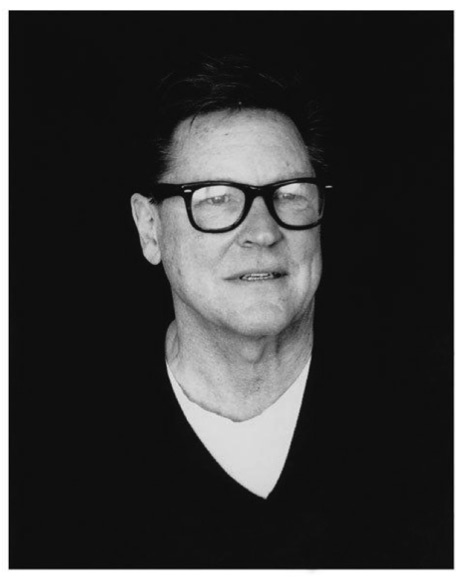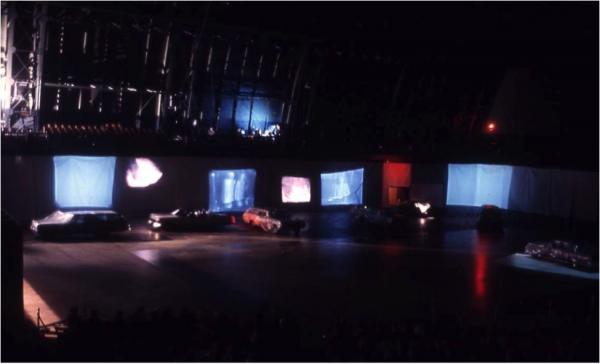Recently, artist Robert Whitman visited the Art + Technology Lab to reflect on his long career. Hosting an evening devoted to Whitman’s work was an obvious choice for the Lab’s conversation series; spanning more than four decades, his projects have involved telex, satellite transmission, live broadcasts, pay telephones and directed walks, and offer a foundational perspective for artists working with technology.
Whitman was a participant in LACMA’s Art and Technology program in the late 60s, and it was a pleasure to welcome him back on the eve of his 80th birthday to discuss the poetics of simple description, directed walks, and the role of the audience as participants. He also showed his latest work, SWIM, a work commissioned to be accessible to the blind, and performed at Montclair University in New Jersey last March. In the piece, the swooshing of washing machines gives way to the “woosh-woosh” of an onstage echocardiogram followed by magnetic knocks from an MRI. There is a video of his granddaughter performing, first at age six, and then again at age 10, a song she wrote titled "Echo."
I had a distant personal connection to one of Whitman’s projects as my mother, Suzanne Weil, was the Coordinator for Performing Arts at Walker Art Center in Minneapolis from 1968 to 1976. Her programming brought experimental music and performance to the Twin Cities with extended residencies for Philip Glass, Mabou Mines, Twyla Tharp, and several of the artists involved in the original E.A.T. (Experiments in Art and Technology) program, including John Cage, David Tudor, Robert Whitman, Yvonne Rainer, and Trisha Brown. I was not in town for all of these events, and I heard about many of them by telephone. I remember her describing the Robert Whitman piece, NEWS. She’d arranged for him to do a live broadcast from the local public radio station while the audience followed a route through the city, stopping at designated phone booths to phone in simple descriptions of their surroundings.
A few years ago, when I was involved with works that included mobile phones and city gaming, my mother brought up the Whitman piece, this time recalling that their path that day in 1972 had serendipitously matched that of a wedding party occurring that afternoon so that the phoned-in descriptions broadcast live from the radio station chronicled the progression of the unsuspecting bride and groom as they entered and left various venues. I was struck by the significance of NEWS as a precursor to many of the themes that interest artists and game designers today, particularly those who work with mobile and locative media.

Whitman was not content to leave NEWS to the history books; as mobile phones gained the capacity to upload and stream live video, the piece was reprised as Local Report and performed, with variations including live satellite streaming, around the world. Together, NEWS and the many variations of Local Report form a corpus of works known as the Telecommunications Projects.
Having Robert Whitman in the Lab brought my participation in the original NEWS performance full circle; echoes of my mother’s description of the performance in 1972 overlaid with the discussion in 2015.



